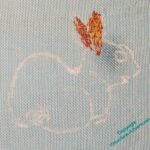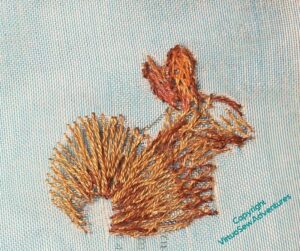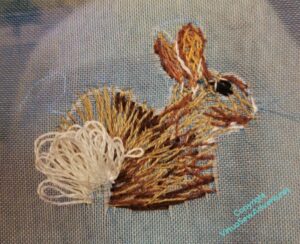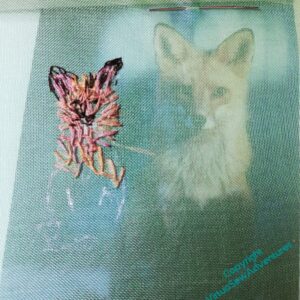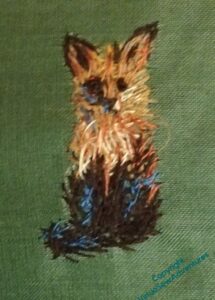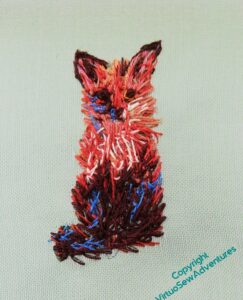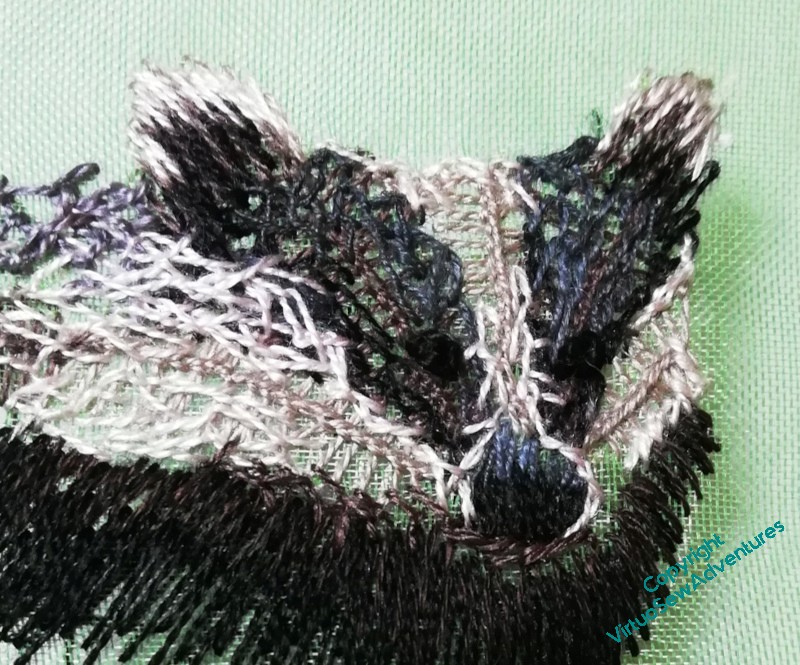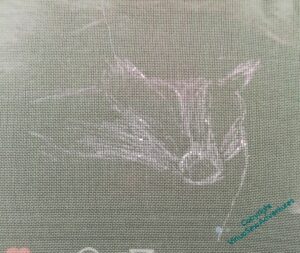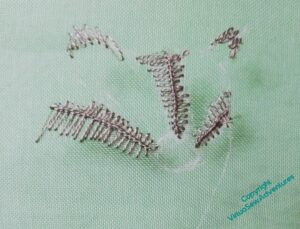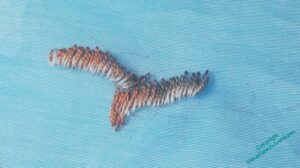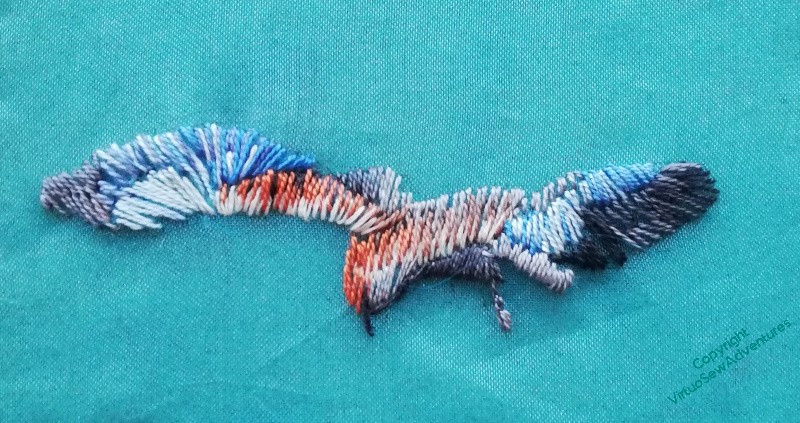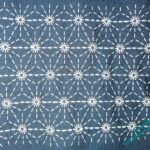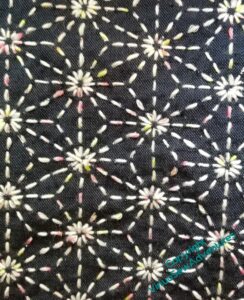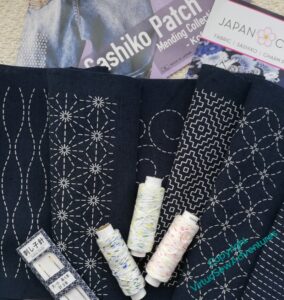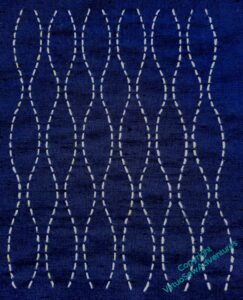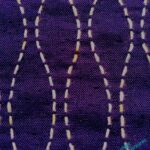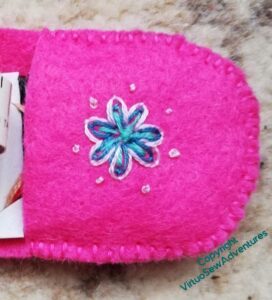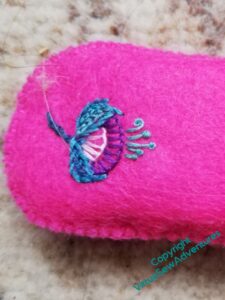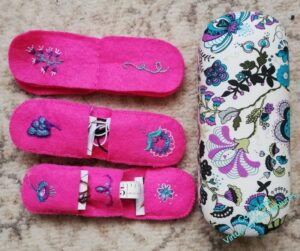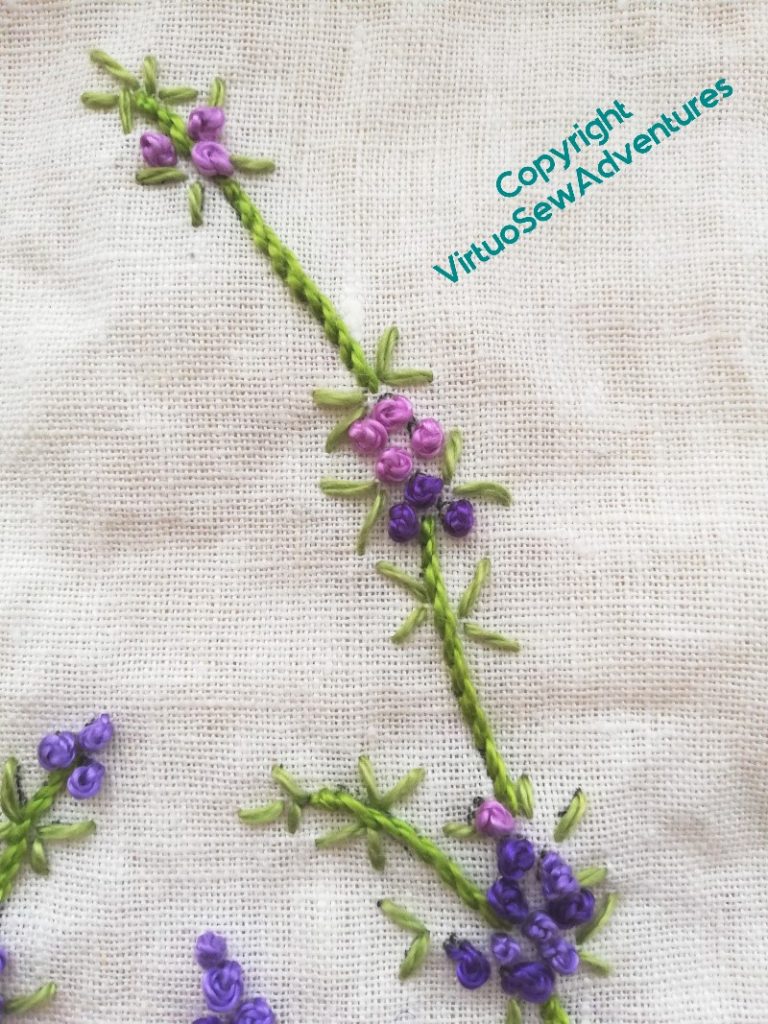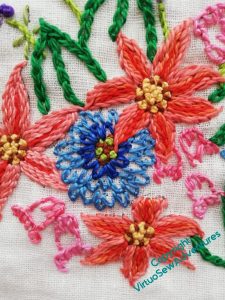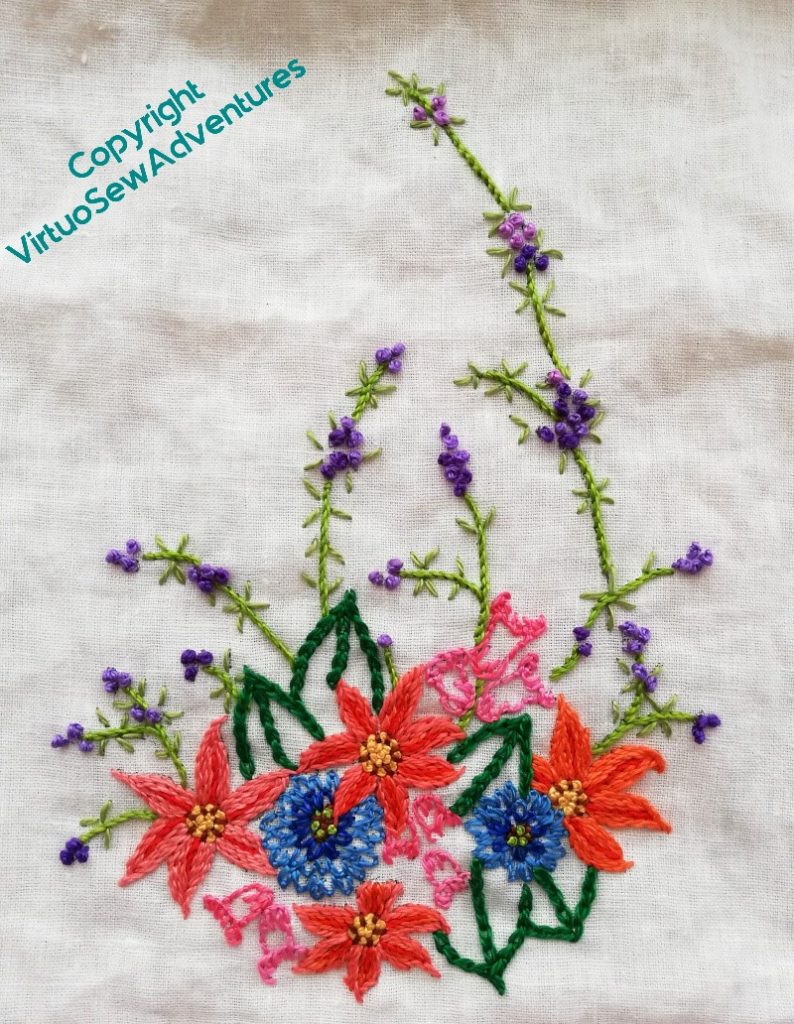Tag: experiments
Finishing the Rabbit
When we last saw Mr Rabbit, he was barely begun, just the ears with some interesting stitch choices.
Much of the stitching thereafter has been in varying random Cretan Stitch. I’m finding it quite useful for layering and intertwining the stitches around one another, each modifying the tone of the other. The gauze is also surprisingly useful, allowing the stitches to show through, modified once again by the colour of the fabric.
I’ve learnt from some of the first few animals and decided to put the eye in at an earlier stage. It’s not easy to get eyes entirely right, and if they are wrong it can look dreadful. As well as being harder to put in and harder to take out, the later it happens.
As I carried on, I put more layers of colour in, and then had the bright idea of doing the bunny’s tail in velvet stitch.
Of course I did.
I can tell you that pile stitch on gauze in single strands of stranded cotton is extremely fiddly and frustrating to do!
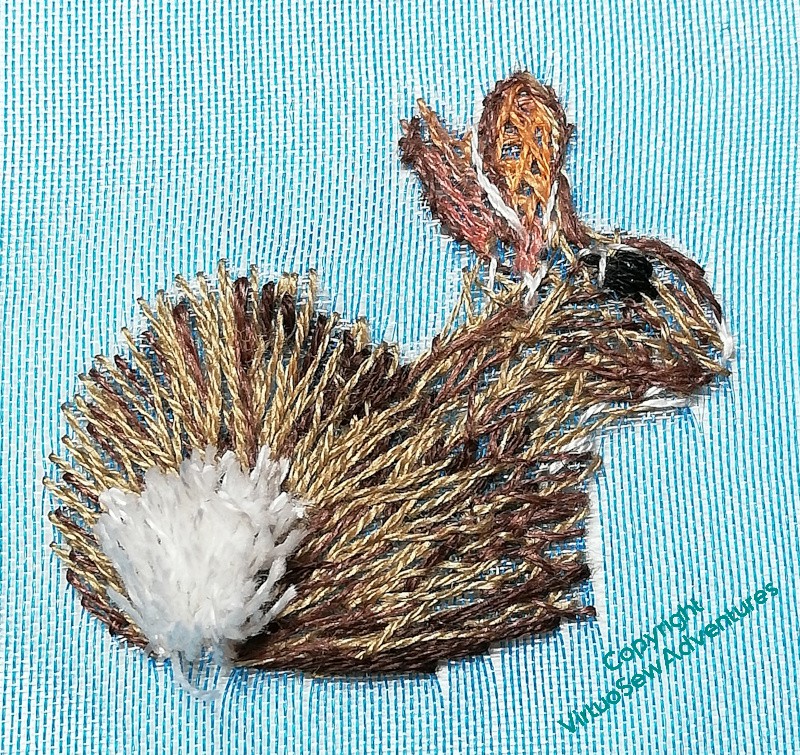
It works, though!
Starting More Animal Vignettes
Since I’ve decided to start on the animal vignettes for the Vision of Placidus, I’ve been making a hay while the sun shines, thinking of animals I want to include and finding picture sources. I do need to re-read the book to make sure I don’t miss out a critical element, but with Aethelflaed, Rahere, and the Lady Julian all swirling around in my head, a lot of research is also swirling around a bit, making it hard to keep things in order. However, while I have the gauze mounted on frames, I might as well keep going.
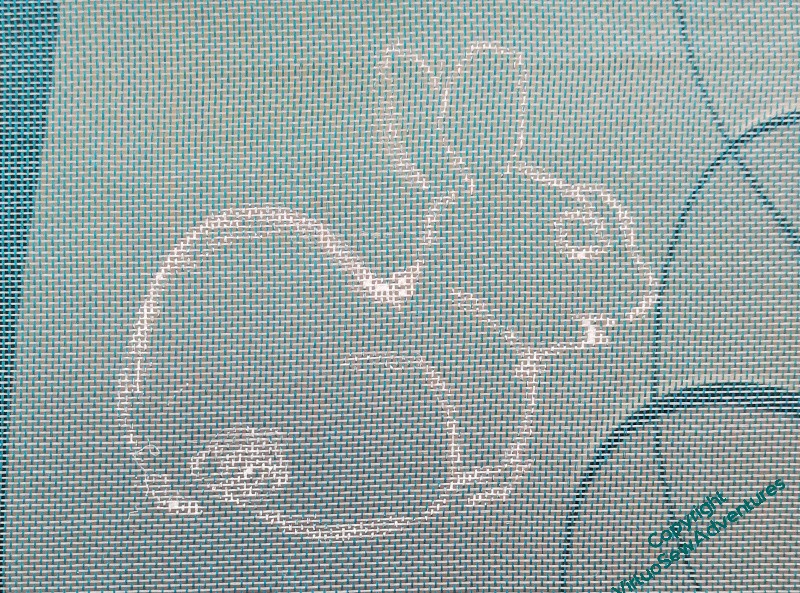
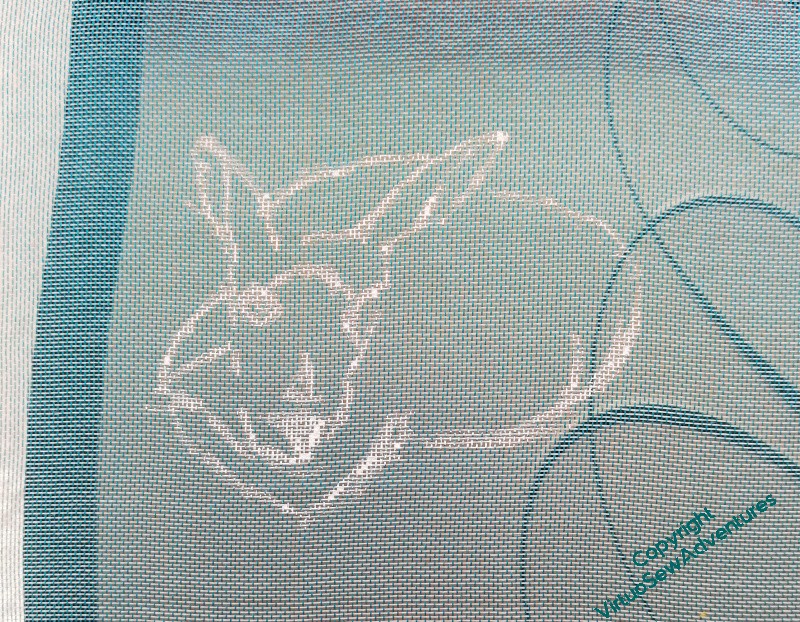
So here we have a fawn and a rabbit. The drawing is maybe not quite the success of the brockis, but it’s all so much stronger than it would have been two or three years ago that I’m taking merely the doing of the drawing as a huge success. I’ll probably keep on going on about this. At school, not only did I have no discernible skill with pencil and pen, I could make a biro blotch just by taking it in my hand. I’ve only really started to work on my drawing skills since late 2018, so when it works I’m almost indecently thrilled!
The sketches are side by size on the gauze, so I started thinking about them and working on them at the same time.
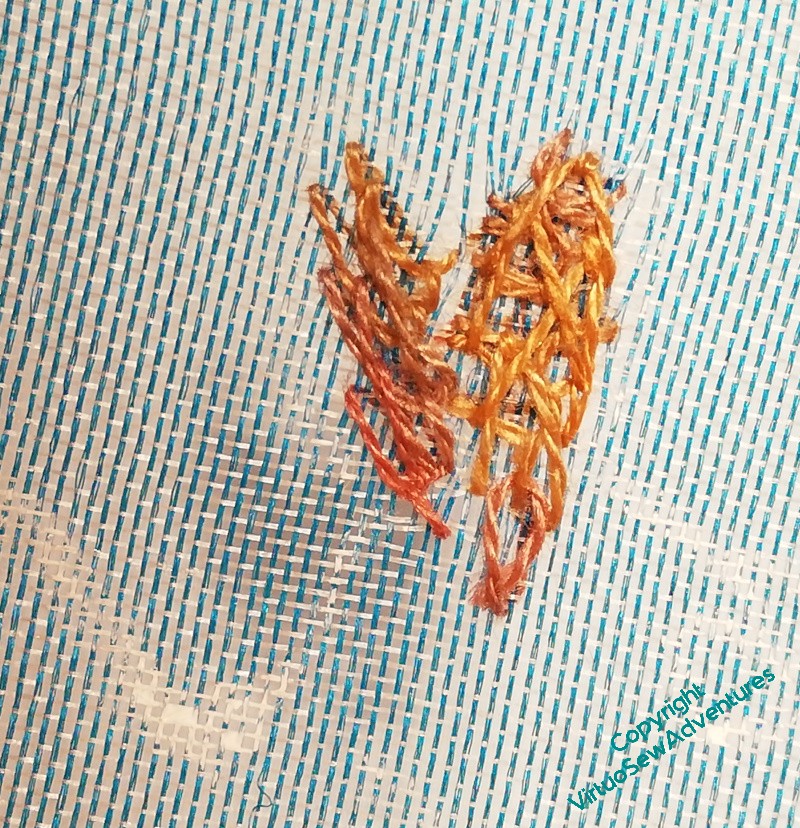
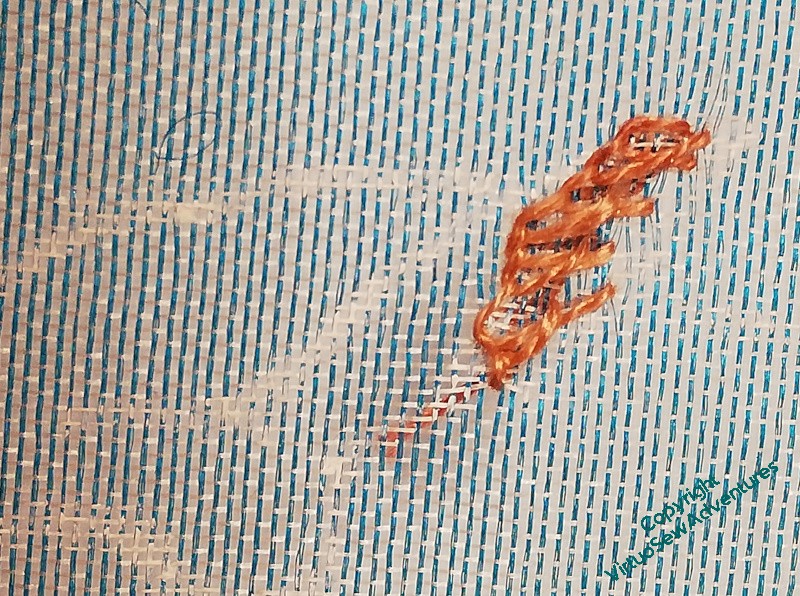
I probably won’t continue to give you quite such close ups, but I wanted to emphasise a few things about how this is beginning to come together in my head. The Medieval Movers and Shakers (William Marshall, Aethelflaed, Rahere, and Lady Julian) are going to be fairly strictly constrained to true Opus Anglicanum, split stitch and underside couching, and I will do that joyfully because it is part of my conception of them.
However – as I believe I may have said before! – my true love in embroidery is in playing with the texture and intricacy of thread and stitch. Even though it’s going to be a huge piece – I’m intending it to be five foot by four, at least – I want it to live and breathe my enthusiasm, in every detail and however closely you look at it. Each ear of these two has something slightly different about the fall of light and the way the lines and edges show, so I’ve tackled them slightly differently.
I’ve learnt from Mus’ Renard, and for now I’m using a single strand of stranded cotton (a Stef Francis variegated one, since you ask). I’ve used crossed blanket stitch in some places, because that gives me a thin line of the pinky-orange in a distinct area. And in the larger one of the two ears of the rabbit, I started with some fly stitches overlying each other. That gives some little shadows and helps everything come together with varying degrees of coverage.
Already this has changed from the Hawk, who was all in satin stitch to cover the gauze. I’m not trying to cover the gauze completely anymore – I’m already quite happy to allow the back to show through, just a little.
Mus’ Renard, Mus’ Renard…
This getting started on the animal vignettes seems to be working, for the moment.
I found a lovely picture of a fox staring straight out of the picture, so I’ve gathered russets and browns for this one. He’s awkwardly sized – maybe too big, when I finally get to the assembly of the panel – and I kept changing from one to two strands of stranded cotton and not being happy with either.
The half stage shows – rather blurrily, unfortunately – that I’ve used blue for the white-in-shadow. It’s amazing how often white does, genuinely, look blue or purple, but in any case, it helps to “lift” the general effect. When you’re mixing colours in painting, you can get lovely blacks and greys which have shades of other colours in them, and aren’t as deadening as straight lamp black would be. In embroidery, as I’ve said before, flat black has a tendency to unbalance a design, and in truth a lot of the greys aren’t much better. You might recall I turned Akhenaten’s black wig blue...!
Well, the gauze really does vanish under light, doesn’t it!
Some of the stitches had to be woven into to shorten the length of the colour on display, and I’m not as happy with Mus’ Renard as I was with the Brockis. But he looks much better from the distance that he’ll be viewed from than he does in analytical close up, and I have to regard at least some of these as studies for the final piece, rather than necessarily parts of that finished piece.
We’ll just have to wait and see…
Working on the Brockis
You may or may not be able to see that there’s a drop-shadow effect in these photos – I learned from the mistake of the hawk, as I mentioned, and mounted the green gauze on a frame before I started. I rather like the result when I set it down for photography, and it gives you a much better sense of the view I got as I stitched.
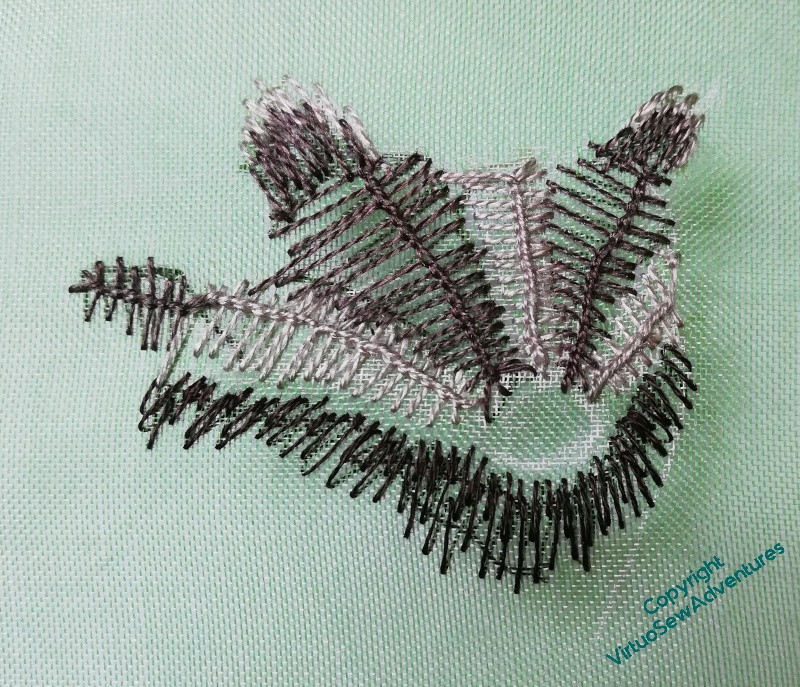
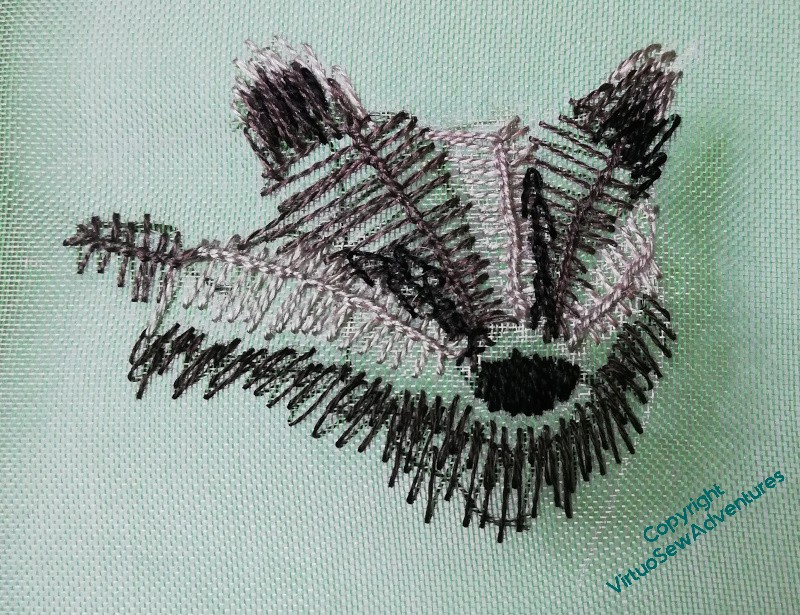
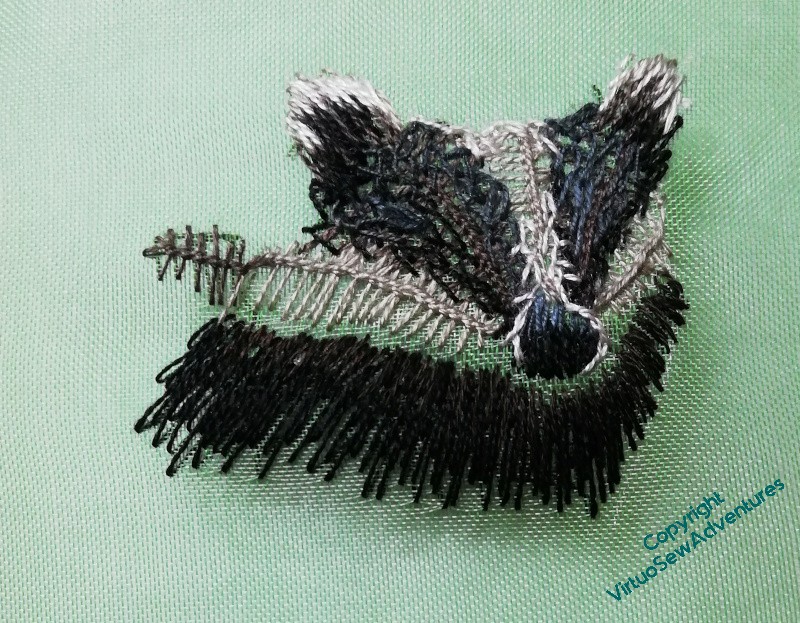
Ordinarily, I would be very concerned about working on gauze – the hawk is virtually satin stitch to ensure there’s nothing grinning through the gaps – but I have a feeling that this is going to evolve as I work on it. Regular readers will know by now that if I’ve convinced myself that something is necessary for the effect I want to achieve, I grit my teeth and do it, even if I don’t think I’ll enjoy it – although by the alchemy of Achieving What I Aimed For, it’s amazing how often I do in fact enjoy it!
My brockis is going to be peering out at the main scene from behind a tree, so he’s going to be on the ground, in amongst the undergrowth, and probably backed by darkish fabric and stitch. That being the case, gaps in the stitching might in fact enhance the sense of depth in the whole assembly. I want him to have rather rough fur, so he’s not going to be satin stitch, is he?
So my brockis is made, again, purely freehand, referring to the photo for guidance, but simply in layers of stitching. I’ve used silk, cotton, and linen threads, and a tangle of Vandyke stitch, Cretan Stitch, feather stitch and alternating twisted chain stitch. The silk came from the same stash as the silk I used for the hawk, the linen is a Stef Francis yarn I bought for the Dreams of Amarna that never quite worked in any of the projects, and the cotton is ordinary stranded cotton, but only single strands.
I’m rather pleased with him.
Another observing animal for Placidus
Elizabeth Goudge’s book “The Herb of Grace”, which gave me the idea for Placidus, is set in a pilgrim inn near to some ancient woodland, and in her writing she regards the trees and animals of that woodland as very much part of the world the family inhabits. She wouldn’t, I’m sure, have considered herself an environmentalist, but only because she probably couldn’t imagine considering herself as other than part of the natural world. Certainly the fictional fresco maker she imagines would have done so.
My reboot over the period between Christmas and Epiphany has suggested that since I want to have a welter of animals observing the scene, maybe I should just start on them. Once I have enough to make a start, that might help me with the trees, the rocks, and the stream. Then Placidus with his horse and hounds, and the stag will have somewhere for their drama to take place.
It was the Herb of Grace that told me of the word “brockis” as an old name for a badger, and over on Patreon, the writer Anne Louise Avery has a character she calls “Grey Brock”, whose adventures are often illustrated with a photo of a badger paying very close attention. I’ve used that photo as my starting point, and sketched my brockis on some green gauze (on a frame, this time!) using a white gel pen.
And can we just pause there to celebrate the fact that I sketched this, freehand, on a difficult surface with an indelible pen, and ended up with a recognisable badger? Even last year, I don’t think I’d have managed it!
The animals are going to be quite experimental, I think. Certainly there won’t be a lot of long and short stitch. I want a lot of rough and ready texture and an excuse to experiment.
So the first layer of my brockis is actually vandyke stitch in a middling creamy beige that will help, I hope, to create some depth in his fur.
Hawk in a clear blue sky…
A good, optimistic start to the creative year, here, with my first bit of stitching for Placidus – who’s only been in the planning stage for a decade or so!
You will see from the progress pictures that I was absolutely rocketing along the edge of catastrophe curve here, very little planning, and just alternating staring at my source and stitching. This is the way I tackled Ankhsenspaaten, and a few other pieces, and it’s very much the way I prefer to paint. But it’s highly uncertain as to success, and I may come back in a few years and try again.
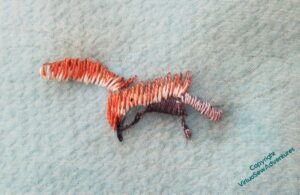
Clicking through will show you how little guidance I’d put on the gauze, and how little it showed once there. Furthermore, I was in such a fever of impatience to start that I used neither frame nor hoop, working in the hand instead. I won’t do that again.
(Until next time I do it..)
I’ve mostly used silk perle, which is lovely, and the particular bundles I’m using I’ve had in my stash for decades. I use it, but it’s quite fine, and until recently I’ve preferred to work with rather more solid materials. We also discovered, when my grandfather’s carer boil washed a tray cloth I’d embroidered for him, that the colours aren’t washfast. Not a problem in this case: a panel hanging on the wall, using a wild mix of materials, is unlikely to be boil washed unless by someone deliberately seeking to destroy it.
In the meantime, if it is to work in the eventual piece, it will need to be savagely blocked or pressed to get the crinkles out of it – not because my tension was tight, but because the stitching is filling up the spaces between the fabric threads and making them move and misbehave.
I don’t mind – I’ve already pinned it out, and I’m just so pleased to have made a start on the Vision of Placidus at last!
Update: I showed this to The Australian, who immediately started singing the Hawthorn team song (Australian rules football). Go, Hawks!
Sashiko – something more complicated
I said the next one would be rather more complicated, didn’t I..!
The pattern is vaguely floral or vaguely snowflakelike, depending on your sensibilities. Since I’ve been finding it very hard to work out which line I’ve done and which I haven’t, loooking at the front, I thought the best thing to do would be to show progress from the back. Please forgive the changing colours – I refer you to the light in rainy Decembers in England!
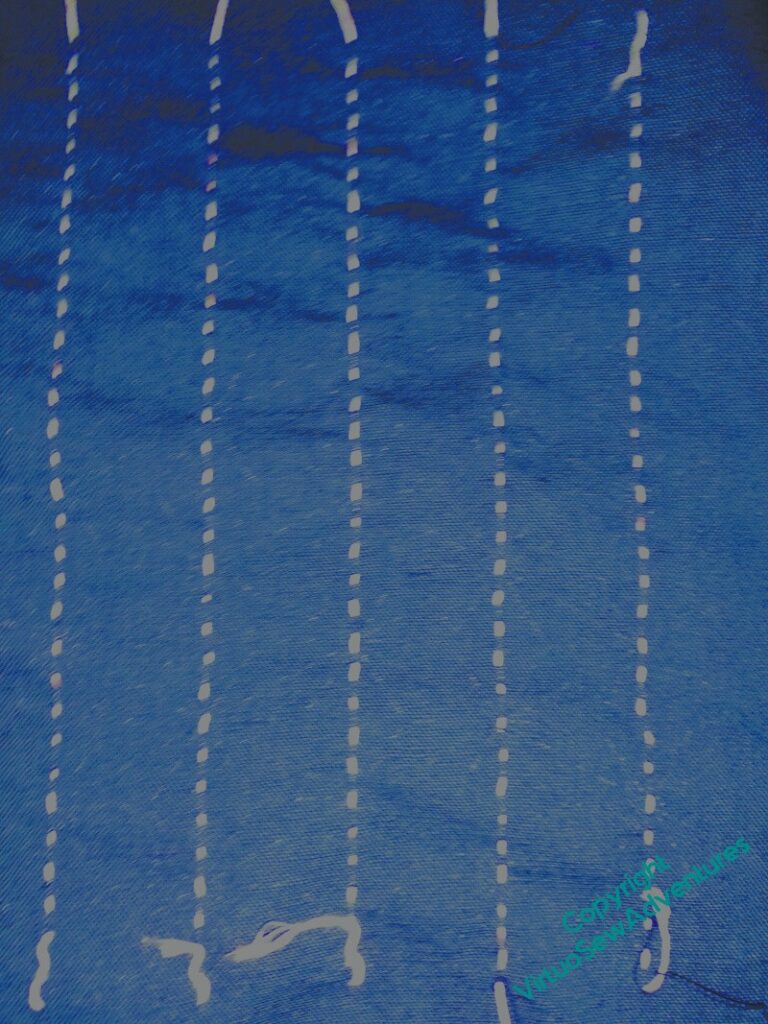
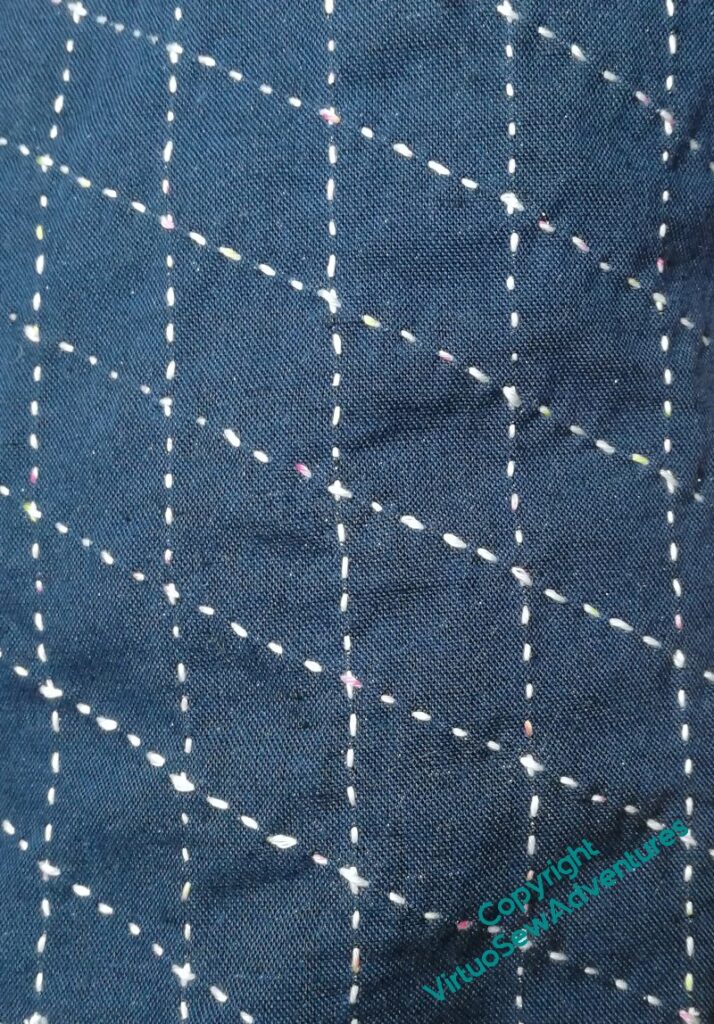
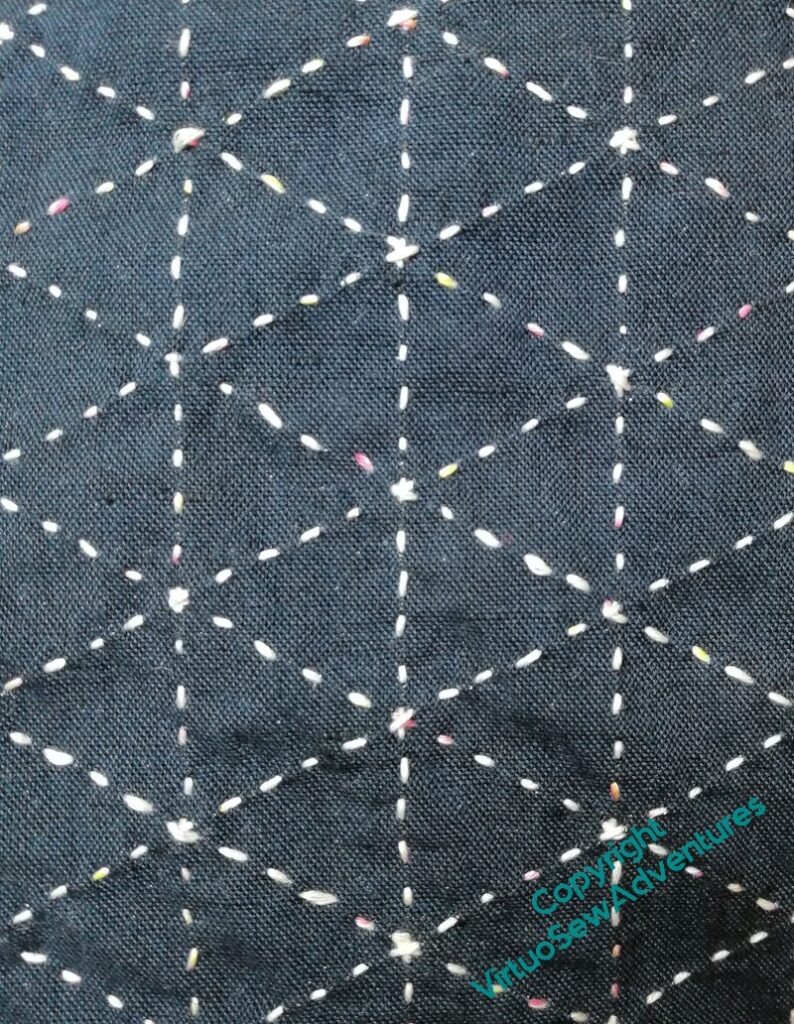
When I got to the middle of the sequence, I started to have doubts about how I was going to finish the pattern in a neat and tidy fashion, and I was wondering whether I was missing something or it was really going to be a bit messy on the back.
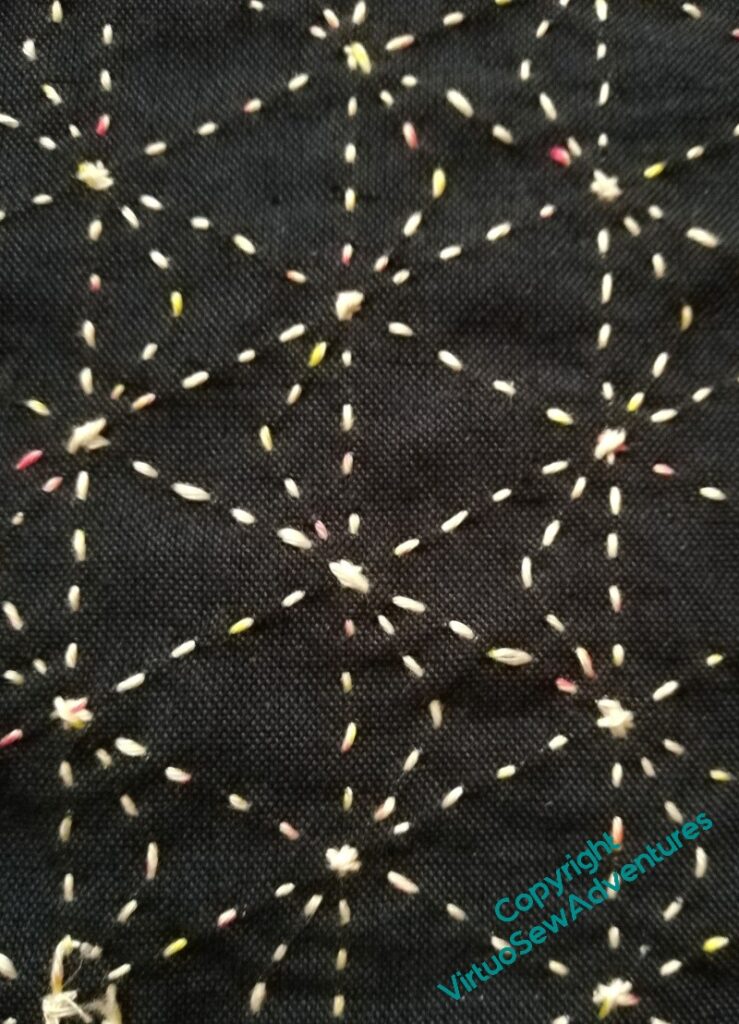
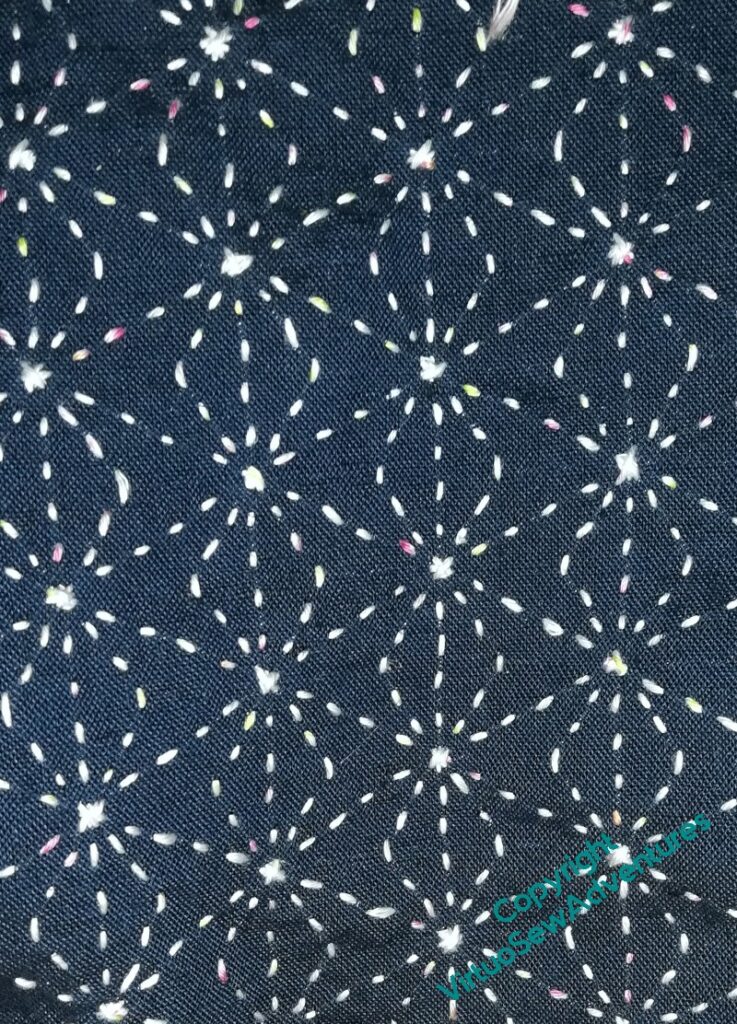
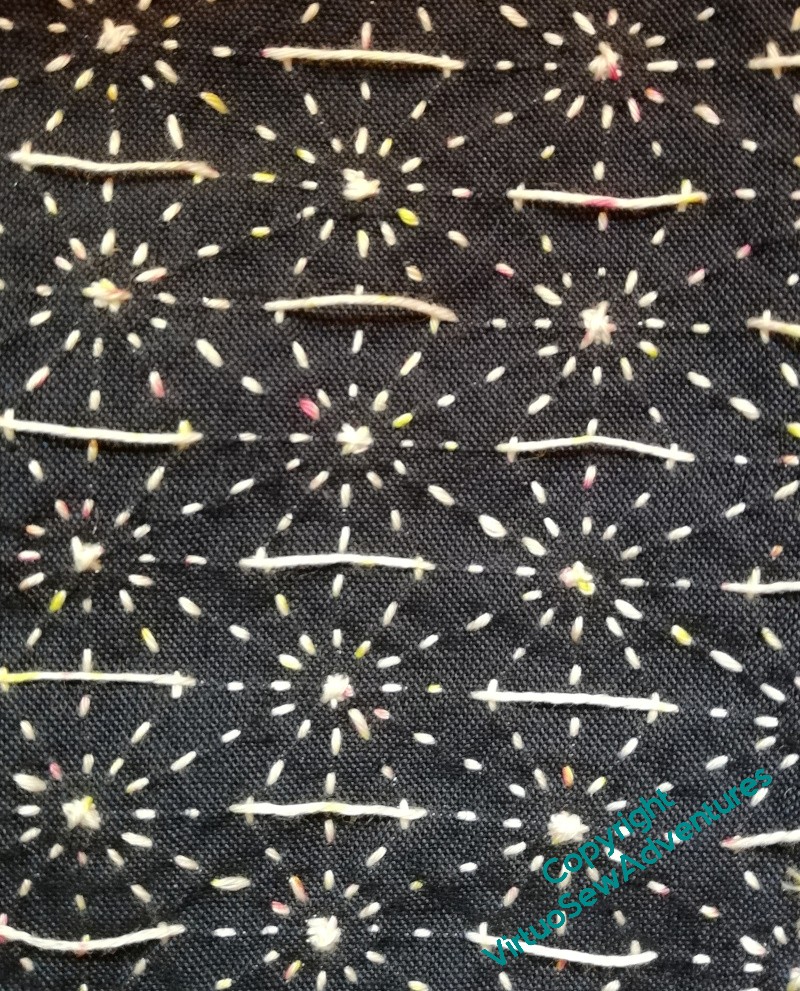
Then it occurred to me that I have a graph theorist in the house (The Australian), so I consulted him. I explained what I’d understood to be the principle, and that I was afraid I would have to have long floats on the back. The Australian looked at the pattern, pointed, and said “There’s a degree three vertex there, so yes, you’ll have some long floats!”
As indeed I did.
But it does look pretty when it’s done, doesn’t it!
Sashiko – following instructions for a change!
You may recall that for the past few years, for the period between Christmas and New Year, I’ve bought myself a kit, or put together a kit, of something I don’t usually do, that will involve me in following instructions. So, for this year, when I went to the Harrogate Knitting and Stitching Show in November, I bought myself a “Sashiko Patch” packet, some thread, and some needles – quite long needles, and quite strong, because the idea is to rock the needle through the fabric to take several stitches before pulling the thread through – so I was told.
When I opened the packet, I discovered that there weren’t really any instructions, but as I understand it sashiko is worked in rows of running stitches that cross each other to create the finished pattern.
Or not. The first one I tackled was relatively simple, single rows of running stitches in a wavy configuration. I think the finished effect is a bit like a very stylised bark pattern, and it went quite quickly.
The next one (see the fabric in the first picture) isn’t going to go nearly so quickly…!
Making a Mending Kit
I have a rather nice spectacle case which is surplus to requirements for spectacles, but which I thought I could make useful for other purposes, so it’s now a mending kit!
I’m notorious in the family for reaching for needle and thread even when a machine stitch might be better (I was doing some mending when visiting with friends a few years ago, and when their father rang, they said “Guess what, Rachel’s been here half an hour, and she’s already got a needle in hand!”), but what I don’t have is a mending kit I can just stuff in a suitcase/glove compartment and be sure it’s to hand.
I put some thought into what I wanted to have to hand, and embellished various elements with embroidered motifs inspired by the motifs on the case.
There are pockets for small cards of thread. I’ve used half metre lengths of stranded cotton in a variety of colours so I should always have something close-ish to what I need.
Other pockets hold some round elastic and a measuring tape. The measuring tape isn’t often necessary, but it’s hard to improvise when you need one.
I’ve found a small pair of folding scissors and attached them at the back of one of the sections, as well. I’ve seen an idea for a captive blade for a really minimal mending kit, and I’ve a small packet that idea might be perfect for, but I don’t have to be minimal here!
I’ve ended up with three sections.
The top one is essentially a needle book, but I’ve tacked four shirt buttons to one page, and I’m gathering safety pins for another. I’ve got two sewing needles and one rather larger eyed needle on the one page with needles in.
There are three cards with three colours of thread on each, in their own pockets, one pocket with elastic (black and white) and one with a tape measure. If I find a flatter tape measure I’ll swap that out. I’m sure I have one.. and on the back of the middle section I’ve got a strap for the scissors.
You just watch, I’ll not need it for a year at least!
Playing with Flox 4 – finish
I worked both ends of the table runner at the same time, because I thought that would enable me to see the whole thing as a single piece, rather than two pieces the same. As I’ve said many times, I have a real problem with repeating motifs, and this is one way I try to trick myself into not seeing the repeats, as it were.
The other thing I did was to put the stems in quite early on in the process. Partly because it was an easy choice to make, and partly because one of my other discoveries over the years is just how much different it makes to the sense of making progress if the design is visually joined up. “Spotty” designs are very discouraging, but if the design elements are linked, somehow progress is easier to see.
In the picture here, you see most of the decisions I made for the main section. Each of the orange petalled flowers uses a different combination of the several orange threads I had in my bundle, which turned out to be just as well, as it makes it look deliberate while reducing the terrors of playing Thread Chicken.
I also learnt from the first frilly flowers and when I reinstated them in blue, I used two shades, which makes for a much lighter and less blocky look.
The two shades of pink in the bell flowers also help to make the whole thing a bit less monolithic. It’s just as well, because the weight of the thread does make the stitching very emphatic.
So, it’s finished, although yet to be pressed owing to the fact that the ironing board bites and I’m rather fighting shy of it at present.
My suspicion, based on my experience with Kai-Lung, is that had I been able to use the original transfer, the design would have been larger, making it maybe possible only to do one end of the table runner, but also changing the relative scale of design to thread. The design is a little small for the thread, so when I come to use up the leftovers on something else, I must remember to enlarge whatever I use. I will just have to be ingenious with my colour distribution!

